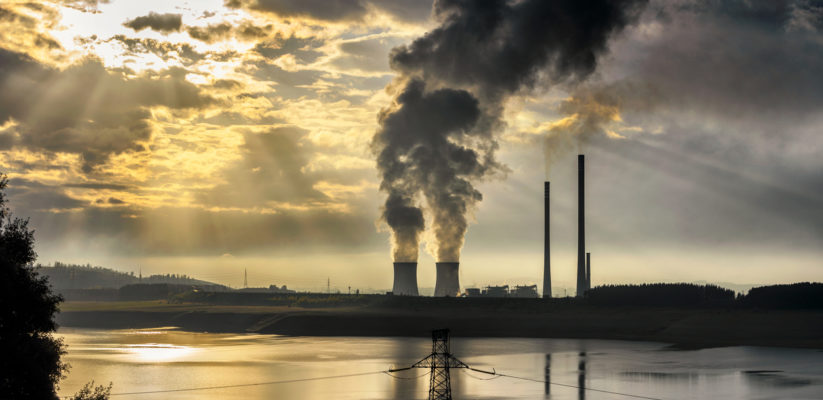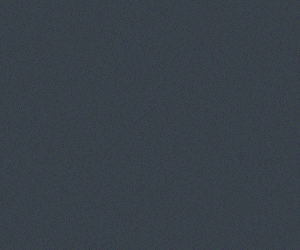International
Climate plans would allow up to 2.6C of global warming: UN

| By AFP | Patrick Galey |
Country climate pledges leave the world on track to heat by as much as 2.6 degrees Celsius this century, the United Nations said on Wednesday, warning that emissions must fall 45 percent this decade to limit disastrous global warming.
The United Nations Environment Programme, in its annual Emissions Gap report, found that updated national promises since last year’s COP26 summit in Glasgow would only shave less than one percent off global greenhouse gas emissions by 2030.
The world has warmed nearly 1.2C since the start of the Industrial Revolution and already faces increasingly ferocious climate-enhanced weather extremes like heatwaves, storms and floods.
The Emissions Gap report examines the difference between the planet-heating pollution that will still be released under countries’ decarbonisation plans and what science says is needed to keep to the Paris Agreement goal of limiting warming to between 1.5-2.0C.
A day after the UN’s climate change agency said governments were still doing “nowhere near” enough to keep global heating to 1.5C, UNEP found progress on emissions cutting had been “woefully inadequate”.
It said that additional pledges made since the COP26 summit in Glasgow last year would not even cut emissions by one percent by 2030.
Failure left the world “hurtling towards” a temperature rise far in excess of the Paris goals, it added.
“It’s another year squandered in terms of actually doing something about the problem,” the report’s lead author, Anne Olhoff, told AFP.
“That’s not to say that all nations have not taken this seriously. But from a global perspective, it’s definitely very far from adequate.”
The report found that in order for temperature rises to be capped at 2C, emissions would need to fall 30 percent faster by 2030 than envisioned under countries’ most up-to-date plans.
To limit heating to 1.5C, the gap is 45 percent.
Under the 2015 Paris deal, countries are required to submit ever deeper emission cutting plans, known as Nationally Determined Contributions, or NDCs.
UNEP found that “unconditional” NDCs — which countries plan regardless of external support — would probably lead to Earth’s average temperature rising by 2.6C by 2100. Scientists warn that level would be catastrophic for humanity and for nature.
Conditional NDCs — which rely on international funding to achieve — would probably lead to a 2.4C temperature rise this century, it said.
All told, current plans are likely to see a five- to 10-percent reduction in emissions by 2030 — a far cry from the drop of nearly 50 percent required for 1.5C.
‘Missed opportunity’
UNEP said that in 2020, carbon pollution fell more than seven percent, largely thanks to Covid-19 lockdowns and travel restrictions. A fall of that magnitude is needed every year this decade to stay on track for 1.5C.
But it said greenhouse gas emissions in 2021 could end up being the highest on record — some 52.8 billion tonnes — because countries threw themselves into fossil-fuelled pandemic recoveries.
“We see a full bounce-back in emissions after Covid,” said Olhoff.
“It’s a missed opportunity in terms of utilising these unprecedented recovery funds to accelerate a green transition.”
Separately, the International Energy Agency said on Thursday it believed global energy emissions would peak in 2025 as surging oil and gas prices spurred a drive to renewables.
But UNEP said that while the switch to greener tech in the power sector was accelerating, several industries were lagging behind in the push towards net-zero emissions.
For example, in the food sector, which is responsible for around a third of emissions, dietary changes and cutting food loss could help reduce the sector’s footprint by more than 30 percent by 2050.
‘Avoid as much damage as possible’
Olhoff said the financial sector was “part of the problem rather than part of the solution” to climate change, with hundreds of billions funnelled annually to fossil fuel projects.
UNEP suggested the introduction of an effective carbon price under a global cap and trade system that would push investors to consider the environmental impact of their portfolios.
It also called for central banks to make more funds available and help create global low-carbon technology markets.
UN Secretary General Antonio Guterres said Thursday’s report showed the world “cannot afford any more greenwashing”.
“Commitments to net zero are worth zero without the plans, policies and actions to back it up,” he said in a video message.
Last year the Intergovernmental Panel on Climate Change said that the world was likely to reach and even exceed 1.5C within decades, no matter how quickly emissions fall in the short term.
Olhoff said that for every year that passed without significant emissions cuts, 1.5C was getting “less realistic and less feasible”.
But she insisted that governments needed to accelerate the green transition to avoid as much damage as possible.
“The more we learn, it’s absolutely clear that we should aim to get (temperature rises) as low as possible,” Olhoff said.
“Even if that means 1.6C instead of 1.5C, that’s definitely better than 2C degrees, just as 1.7C is worse than 1.6C.”
International
Regional mexican music mourns the death of Banda Gota de Oro singer Giovanni Vera

Regional Mexican music is mourning the death of Giovanni Vera, lead vocalist of the band Banda Gota de Oro, who was among the victims of an armed attack that occurred on Sunday, December 28, in the Mexican state of Guanajuato.
The incident took place inside a residence located in the Los Presidentes neighborhood, in the municipality of Irapuato.
According to preliminary reports, several people were gathered at the house when armed men burst in and opened fire on those present. The attack left five people dead, including the singer.
Hours after the shooting, Banda Gota de Oro confirmed Vera’s death through its official Instagram account. In one of the posts, the group expressed its grief with an emotional message: “Today, the sky is dressed for a celebration because you are singing up there. Your voice and your joy will live on forever within us.”
Messages of support and condolences from fans and fellow musicians quickly flooded social media, paying tribute to the artist and expressing solidarity with his family and bandmates.
International
One Dead, Three Injured in Shooting at Cree Nation in Saskatchewan

One person was killed and three others were injured in a shooting reported early Tuesday in the Big Island Lake Cree Nation, in the Canadian province of Saskatchewan, according to local media.
Police said they were alerted to the incident in a remote area located approximately 392 kilometers northwest of the city of Saskatoon. Authorities issued a dangerous persons alert for two suspects, who were described as armed.
Saskatchewan police urged residents to seek shelter immediately, lock their doors, and avoid the area while the situation remains under investigation. Officers are working to determine whether the shooting was a targeted attack or a random act of violence.
As a precautionary measure, seven health-care facilities in the surrounding area were placed under lockdown, Saskatchewan Premier Scott Moe said in a post on X.
International
Mexico’s President Visits Victims After Train Derailment Kills 13 in Oaxaca

Mexican President Claudia Sheinbaum visited on Monday the victims injured in a train accident that left 13 people dead in the southern state of Oaxaca and announced financial assistance for those affected by the derailment of the Interoceanic Train, which was inaugurated in 2023.
The train, carrying 241 passengers and nine crew members, derailed on Sunday while traveling along the Interoceanic Corridor, a major infrastructure project that connects the Pacific coast with the Gulf of Mexico across the Isthmus of Tehuantepec. The corridor was one of the flagship initiatives of former President Andrés Manuel López Obrador’s administration (2018–2024).
Sheinbaum visited three hospitals in the neighboring towns of Tehuantepec and Salina Cruz, where around 20 injured passengers remain hospitalized. She also went to a funeral home to accompany the families of those who lost their lives in the accident.
According to Mexico’s Navy Secretary, Raymundo Morales, the accident occurred when one of the locomotives derailed, causing all four railcars to leave the tracks.
-

 Central America4 days ago
Central America4 days agoHonduras: Zelaya Calls for Mobilization Amid Dispute Over Tegucigalpa Mayoral Race
-

 International2 days ago
International2 days agoMan accused of killing nine in Paramaribo dies by suicide in police custody
-

 International2 days ago
International2 days agoSix killed, including baby, in armed attack near tourist beach in Ecuador
-

 International3 days ago
International3 days agoWinter storm disrupts holiday travel, forcing 1,500 flight cancellations in the U.S.
-

 International1 day ago
International1 day agoOne Dead, Three Injured in Shooting at Cree Nation in Saskatchewan
-

 International1 day ago
International1 day agoMexico’s President Visits Victims After Train Derailment Kills 13 in Oaxaca
-

 International8 hours ago
International8 hours agoRegional mexican music mourns the death of Banda Gota de Oro singer Giovanni Vera




























